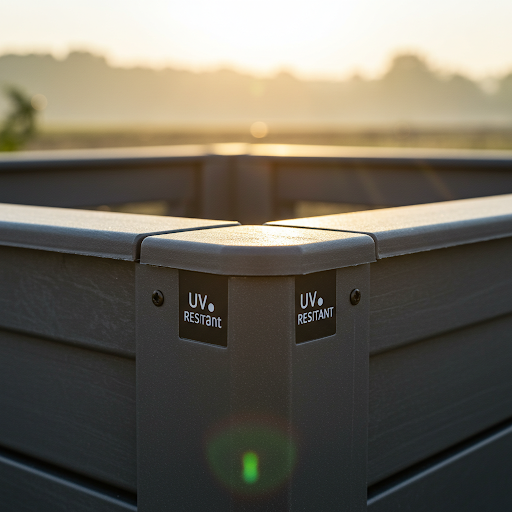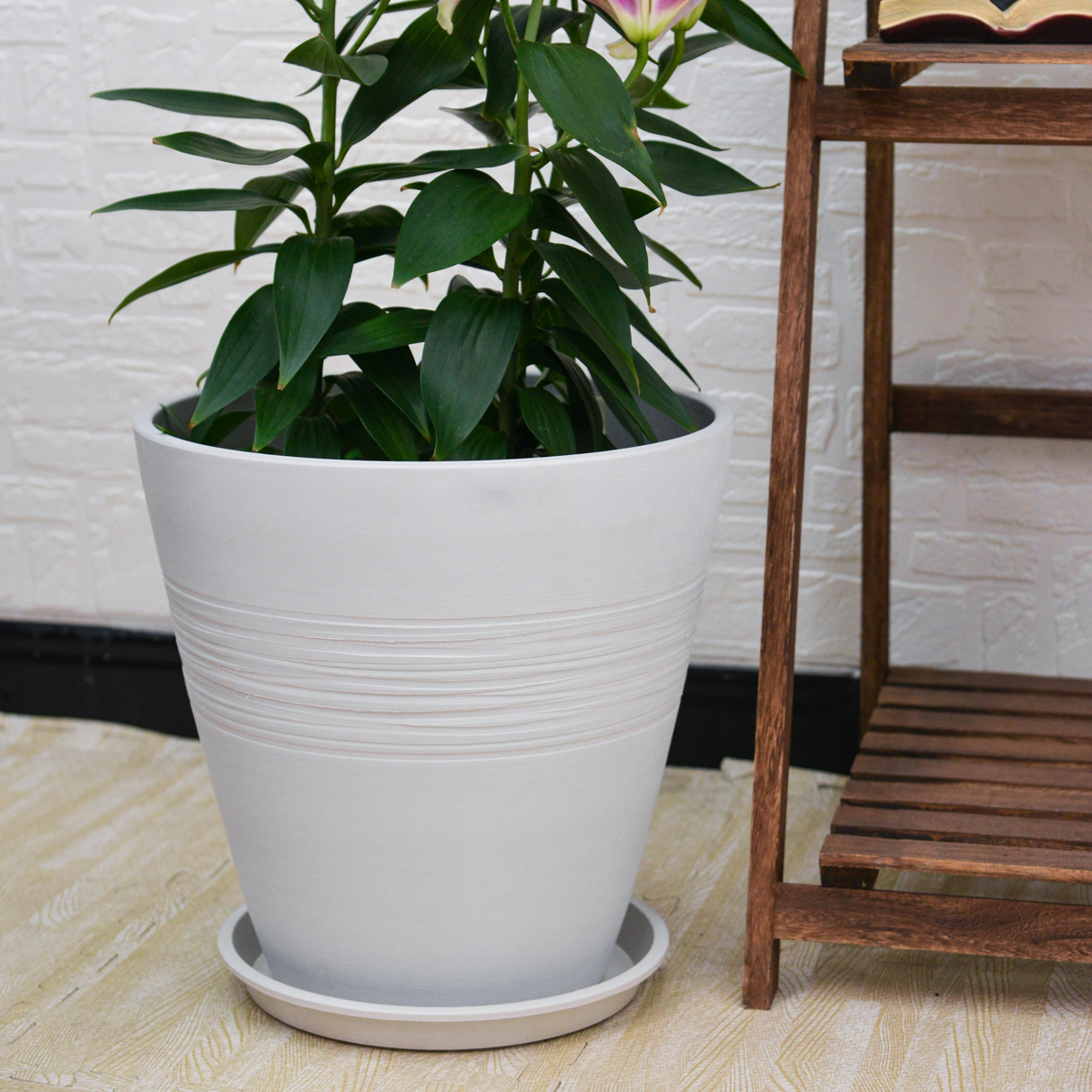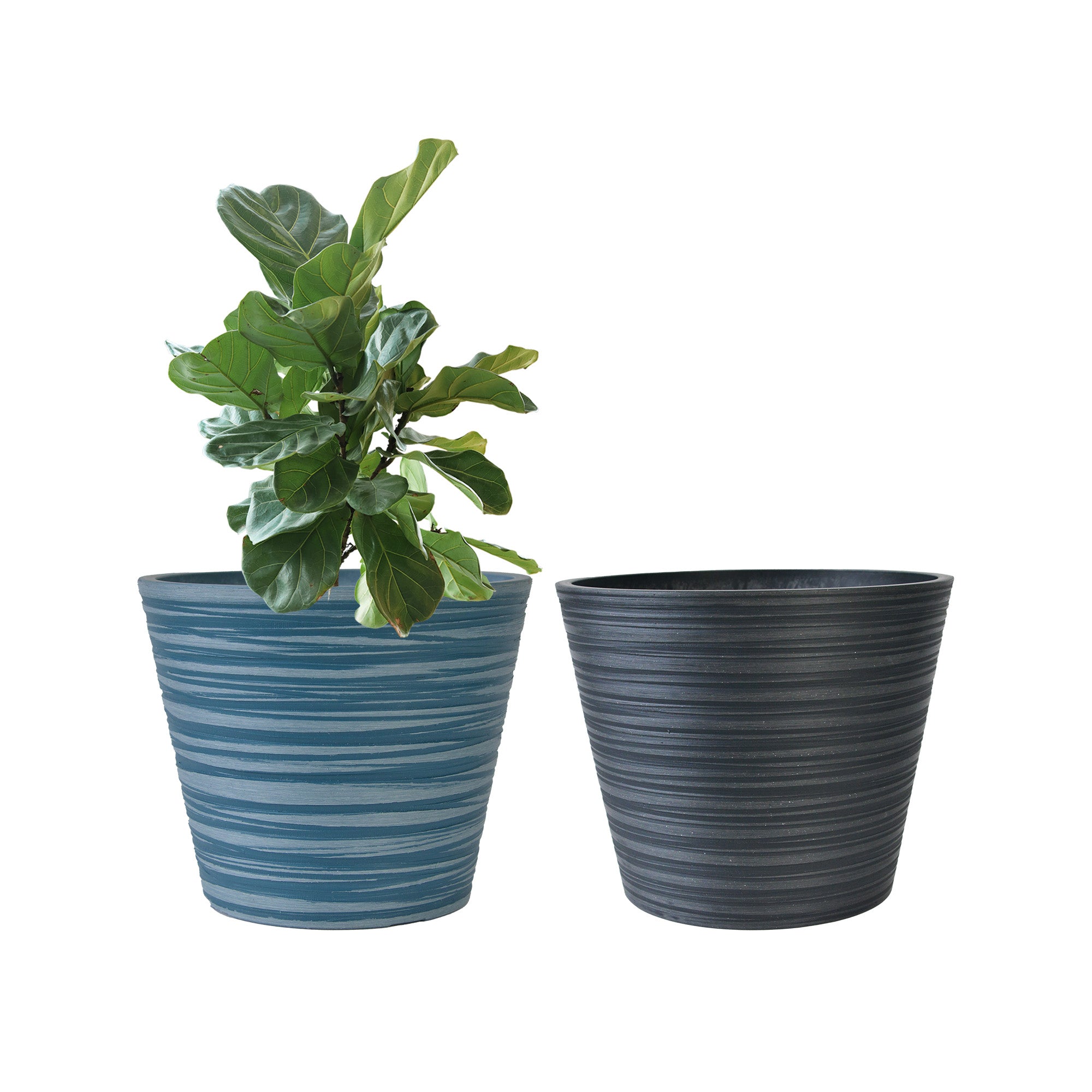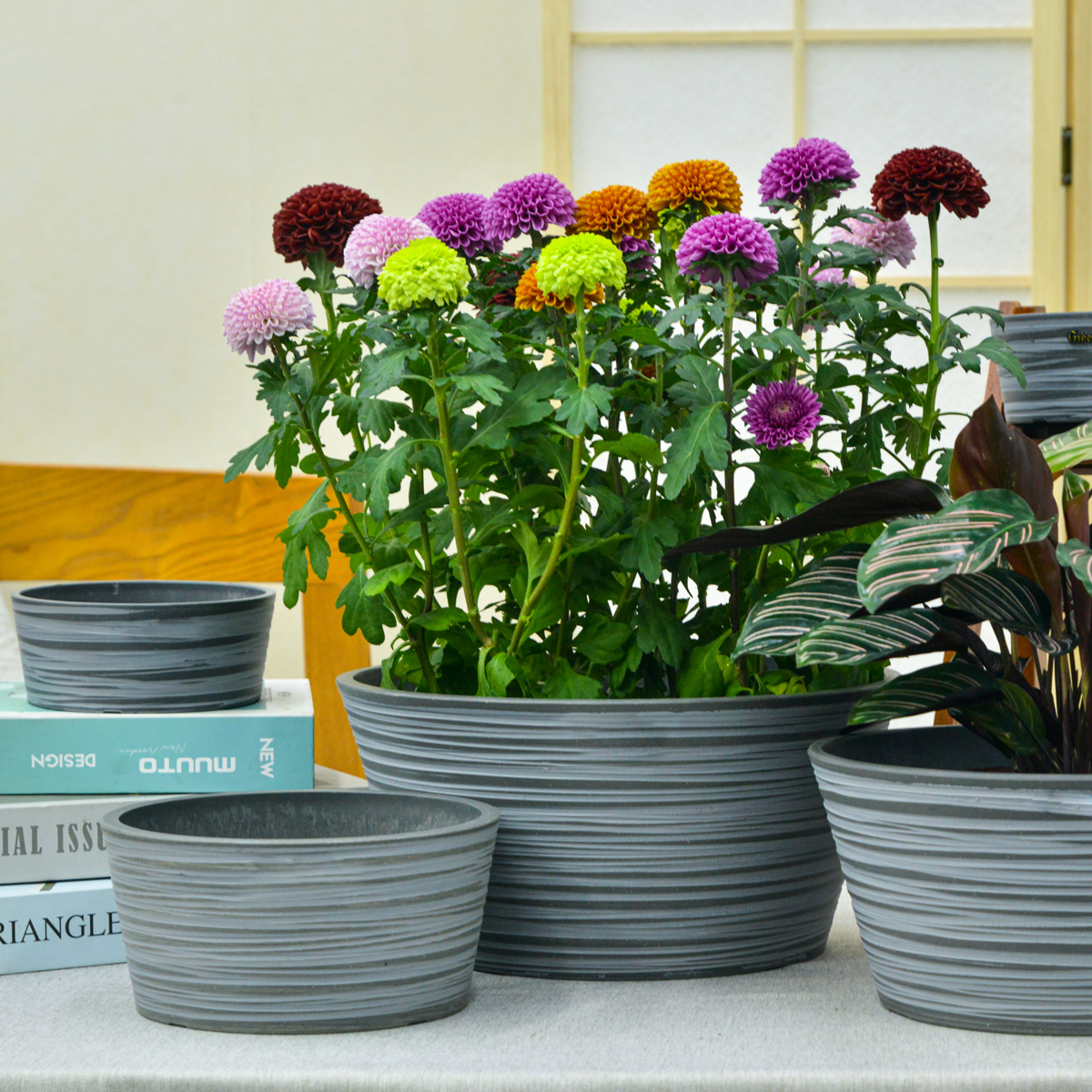What Environmental Factors Should I Consider When Choosing Outdoor Planters? Tailoring Your Choices to Your Local Climate
Selecting the right outdoor planters is about more than just finding something that looks good on your porch or patio. To truly ensure the health of your plants and the longevity of your planters, you need to consider the specific environmental conditions of your location. The United States boasts a diverse range of climates, and what works in the sunny Southwest might not be ideal for the humid Southeast or the frigid Northeast. Let’s explore some key environmental factors and how they should influence your planter choices.

1. Intense Sunlight and Heat (e.g., Southwestern US):
Regions like Arizona, Nevada, and Southern California experience intense sunlight and high temperatures.
- Considerations: Dark-colored planters can absorb excessive heat, potentially harming roots. Opt for lighter colors or materials that don’t retain heat as much, such as terracotta (though be mindful of its fragility), light-colored concrete, or UV-resistant plastics. Larger planters can also help retain moisture for longer periods in the heat. Avoid black plastic nursery pots directly exposed to intense sun.
- Material Suggestions: Light-colored concrete, glazed ceramic, high-quality UV-protected plastic, light-toned metal.
2. High Humidity and Rainfall (e.g., Southeastern US):
States like Florida, Georgia, and Louisiana face high humidity and frequent rainfall.
- Considerations: Drainage is paramount to prevent root rot. Choose planters with ample drainage holes. Materials resistant to rot and mildew are essential. Naturally water-resistant woods like cedar or cypress, rust-proof metals like aluminum, and durable plastics are good options. Avoid porous materials like unsealed terracotta which can stay waterlogged.
- Material Suggestions: Cedar, cypress, aluminum, high-density polyethylene.
3. Cold Winters with Freeze-Thaw Cycles (e.g., Northeastern and Midwestern US):
Areas like New York, Michigan, and Maine experience harsh winters with repeated freezing and thawing.
- Considerations: Planters need to withstand these cycles without cracking. Avoid thin terracotta or clay pots. Opt for frost-resistant materials like thick plastic, fiberglass, metal, or concrete. Consider insulating planters during the coldest months or moving them to a sheltered location. Ensure good drainage to prevent water from freezing and expanding within the planter material.
- Material Suggestions: Thick plastic, fiberglass, metal (especially powder-coated), concrete.
4. Strong Winds (e.g., Coastal Regions, Mountainous Areas):
Coastal states like California, Oregon, and the Carolinas, as well as mountainous regions, can experience strong winds.
- Considerations: Stability is key. Choose heavier planters made of concrete, thick wood, or metal. Low-profile, wider planters are less likely to tip over than tall, narrow ones. Consider securing lighter planters in particularly windy spots. In coastal areas, also consider the impact of salt spray on metal planters; opt for rust-resistant materials like stainless steel or powder-coated aluminum.
- Material Suggestions: Concrete, heavy wood, stainless steel, powder-coated aluminum.
5. Mountain Regions (Variable Conditions):
Mountainous areas like the Rockies and Appalachians can have diverse microclimates with significant temperature swings and intense sun at higher altitudes.
- Considerations: Choose durable materials that can handle temperature fluctuations and strong UV exposure. Good drainage is important due to potential heavy snowfall and spring thaws. Consider the weight of planters if they need to be moved around on uneven terrain.
- Material Suggestions: Durable plastic, treated wood, concrete, fiberglass.

6. Urban Environments (Pollution, Limited Space):
Even within cities, environmental factors play a role.
- Considerations: Planters in urban areas might be exposed to more pollution. Durable, non-porous materials like plastic or metal are easy to clean. Space limitations often dictate the size and shape of planters, favoring wall-mounted or vertical options.
- Material Suggestions: Plastic, metal, composite materials.
By carefully assessing the specific environmental challenges of your location within the US, you can select outdoor planters that are not only aesthetically pleasing but also durable and well-suited to help your plants thrive in the long run.
KC2-GS
By greenship|2024-08-16T06:30:21+00:00August 16, 2024|Categories: Hand-carving Series|
KC2-11V
By greenship|2024-08-16T05:39:50+00:00August 16, 2024|Categories: Hand-carving Series|
Planter 5 in W / 8 in W / 12 in W or Indoor Outdoor Plants, Modern Decorative Plant Pots with Drainage Hole, Decorative Flower Pots
By greenship-seo|2025-04-10T06:37:58+00:00January 16, 2025|Categories: Hand-carving Series|Tags: Decorative Flower Pots|
k2-21G
By greenship|2024-08-13T06:17:26+00:00August 13, 2024|Categories: Hand-carving Series|
Modern Plant Pots with Drainage – Indoor & Outdoor Use (6″ Widths)
By greenship-seo|2025-04-10T06:29:43+00:00February 6, 2025|Categories: Hand-carving Series|Tags: Decorative Flower Pots|
11THD
By greenship|2024-08-13T02:52:20+00:00August 13, 2024|Categories: Hand-carving Series|






